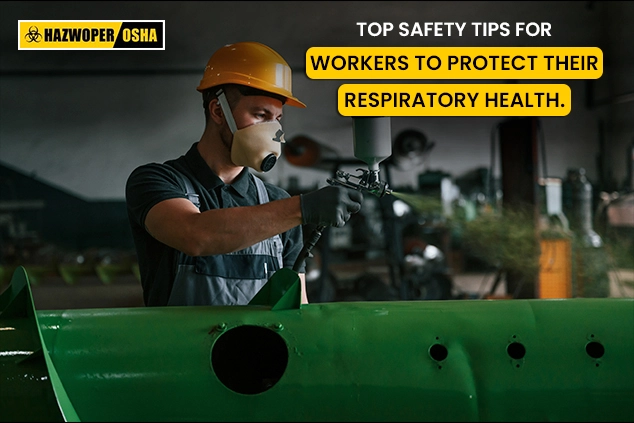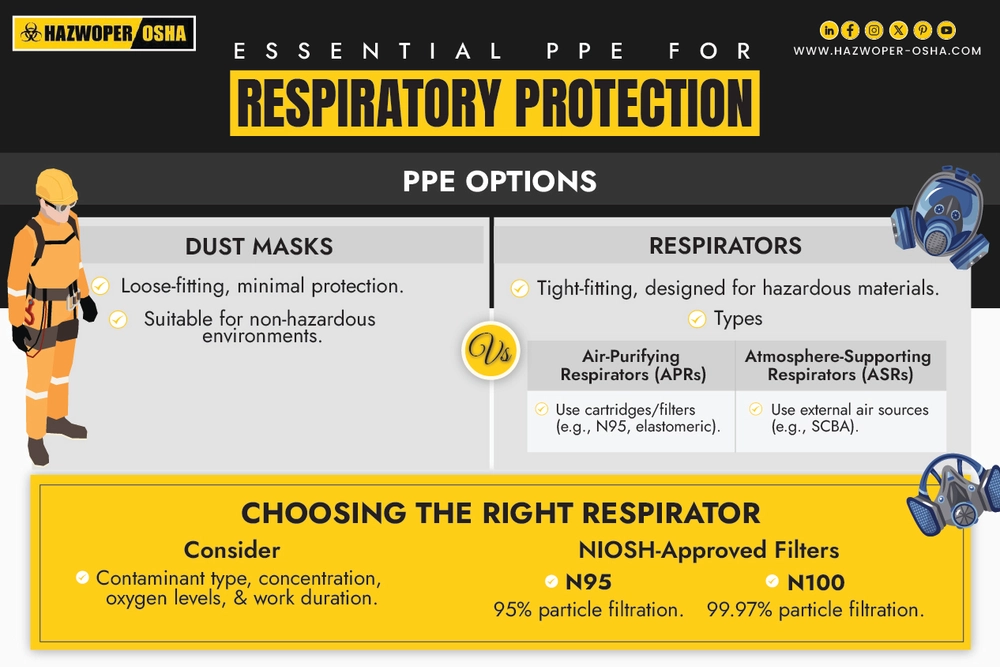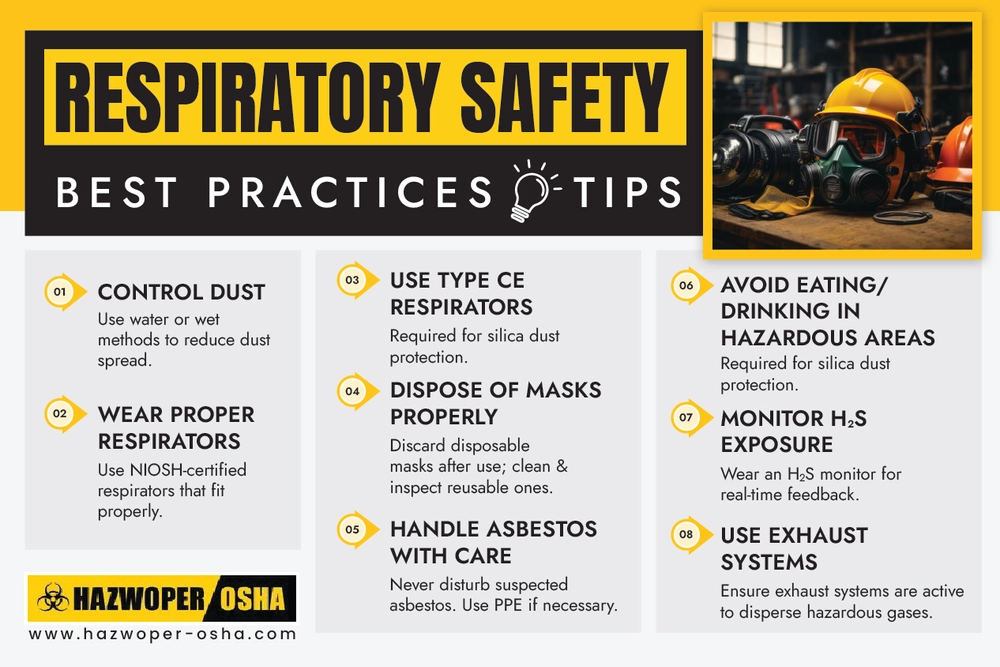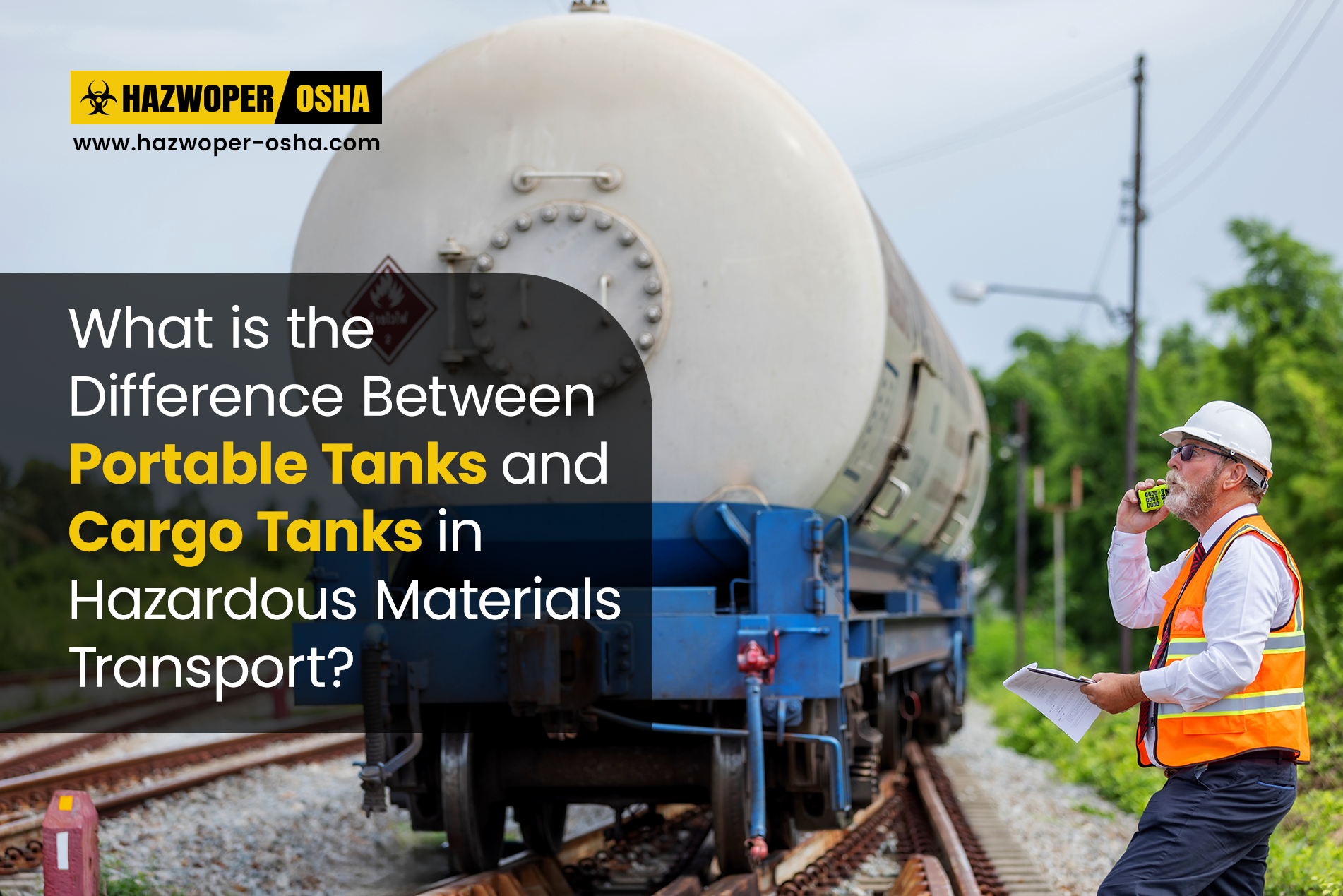Top Safety Tips for Workers to Protect their Respiratory Health

Introduction:
Protecting your lungs at the workplace is a must-have. Different worksites expose workers to airborne hazards such as dust, fumes, vapors, and gases that deteriorate the airways and lungs. Long-term exposure to these substances causes serious respiratory damage that can be fatal as well. That is why workers must recognize the risks and take precautions to protect their respiratory health. We are sharing safety tips to keep your lungs in their best shape to celebrate Respiratory Care Week. During this Respiratory Care Week and beyond, let's prioritize respiratory protection so you can breathe easily and stay healthy for years to come.
What Makes Respiratory Health So Critical for Workers?
Workers across different industries face major concerns regarding their respiratory health due to exposure to various hazardous substances.
CDC reported that in 2023, almost 4.5 million workers in the United States were exposed to hazardous airborne substances daily, boosting the risk of development of respiratory disorders.
What is more shocking is that asthma and chronic obstructive pulmonary disease (COPD), like work-related respiratory conditions, affect 1.3 million estimated workers, emphasizing the critical need for awareness and preventive measures.
Among all industries, the construction industry deals with significant respiratory health issues as their workers are exposed to harmful substances like asbestos, silica dust, and chemical fumes frequently. According to studies, almost 25% of construction workers have reported chronic breathlessness and cough. Due to the ailing health of employees, the economic implications faced by employers are even more concerning. This makes the need for comprehensive occupational health programs focusing on respiratory safety more crucial than ever.
How to Identify Workplace Air Quality Hazards: What Every Worker Should Know
Your respiratory health is closely linked to the poor air quality at your job site. In many ways, poor air quality can manifest in your workplace as fumes, dust, mist, gas vapors, unusual odors, and ENT irritation. That is why you must be vigilant about symptoms like breathing difficulty, constant cough, and chest tightness, which are indicative of exposure to harmful substances.
Air Contaminant Types
Understanding the various types of air contaminants is a must to identify the potential air hazards. The following are the different types of air contaminants normally encountered:
1. Vapors and Gases:
Mostly visible gases and vapors stem from paints, solvents, or welding processes. Carbon monoxide and volatile organic compounds (VOCs) are a few common examples that lead to dizziness, headaches, and nausea when exposed. As reported by the American Lung Association, adult-onset asthma cases are almost 15% related to work, mostly due to exposure to these airborne irritants.
2.Dust:
Sanding, crushing, and cutting produces tiny solid particles called dust. The common dust sources include silica dust from construction activities and carpentry-producing wood dust. Persistent exposure to these dusts causes respiratory illnesses such as chronic obstructive pulmonary disease (COPD) and asthma.
3. Fiber:
Insulation work and demolition release fibers such as synthetic mineral fibers and asbestos. Lung scarring and cancer can be caused by inhaling these fibers. Industries such as construction and manufacturing are more likely to be exposed to these fibers as they are present there.
How Do I Know If My Lungs Are Being Affected by My Job?
Like other health issues, respiratory disorders, when detected earlier, are better. That is why if you’re workplace has airborne hazards, you should be aware of the early warning signs of respiratory diseases. The most common early signs of respiratory illnesses cover:
- Persistent Cough: A cough lasting 8+ weeks may be a sign of a respiratory condition.
- Shortness of Breath: If shortness of breath occurs with minimal exertion, it can be due to lung damage.
- Wheezing: Airways can be obstructed if a whistling sound comes out while breathing.
- Chest Tightness: Lung inflammation and asthma can manifest through chest tightness.
- Nasal Irritation and periodic Sneezing: Mostly caused by workplace irritants.
- Chronic Mucus Production: This can be due to chronic bronchitis.
- ENT Irritation: Irritation in the nose, eyes, and throat can be due to poor air quality.
- Dizziness and Nausea: Inhalation of toxic gases and vapors can lead to lightheaded and nauseous feelings.
If you face any of the above-mentioned symptoms persistently, you should immediately seek medical attention and report to your employer/supervisor. Remember, serious respiratory complications can be deterred only through early intervention.
Essential PPE for Respiratory Protection: The Gear You Can't Work Without
Only the right personal protective equipment can save your 's respiratory health. The specific airborne hazards in the work environment influence the type of PPE you need. This is the breakdown of the most effective PPE options you can use at worksite:

Respirators VS Dust Maks:
Dust masks are loose-fitted and offer the least protection; opposingly, the respirator is designed to protect against hazardous materials such as vapors and gases.
- Air-purifying respirators (APRs) utilize cartridges and filters such as N95 and elastomeric respirators to purify the air.
- Atmosphere-supporting respirators (ASRs) use external sources to provide clean air, such as SCBAs.
While choosing the right respirator type, consider the type of contaminants, their concentrations, oxygen levels, and work duration. NIOSH-approved respirators such as N95 filter at least 95% of small particles, whereas N100 filters 99.97%.
Check out our blog on Respirator Fit Testing: An Important Element of Respiratory Protection to learn more about proper respirator usage.
Personal protective equipment for respiratory protection must be properly fitted and diligently maintained. You should understand the differences between the different types of masks and respirators so that you can make a conscious choice to protect your respiratory health. Both employers and occupational health professionals should collaborate to determine the appropriate type of PPE for their worksite.
Best Practices and Safety Tips for Respiratory Care
Every industry needs a personalized respiratory care program to keep their employees safe from the harmful effects of airborne contamination. To be safe from exposure of substances like silica, asbestos, and other hazardous gases, employees should follow these safety tips:
- When working on tasks that generate dust, minimize dust spread by sprinkling water and using other wet methods.
- When working in the presence of airborne hazards, always wear NIOSH-certified respirators that properly fit in.
- When working in the presence of silica dust, use a Type CE abrasive-blast supplied air respirator.
- Always discard the disposable masks properly and never reuse them. For reusable masks, make sure they are clean and well-inspected before use.
- Never disturb a material if you suspect asbestos is present in it. If you still must work with such material, wear proper PPE and follow proper disposal methods for materials containing asbestos.
- Never eat or drink in dusty and smoky areas. After returning from the worksite, change clothes into clean ones and wash your face and hands thoroughly.
- For H2S exposure, wear a personal H2S monitor that offers real-time exposure level feedback.
- Always turn on exhaust systems in places where hazardous and irritant gases are released to disperse the gas build-up.

Following these safety tips will cut down the risk of respiratory disorders among the employees. Another important way to catch respiratory issues early is by monitoring lung health and undergoing regular testing. In addition, participating in safety courses that deal with respiratory hazards at the workplace effectively, can also come in handy. HAZWOPER OSHA Training offers courses like OSHA Silica Awareness Training, OSHA Asbestos Awareness Training, and OSHA Hydrogen Sulfide (H2S) Awareness Training in flexible learning formats. These courses equip you to tackle these hazardous contaminants effectively.
Conclusion:
As an employee, you surely don't want to join the list of thousands of workers suffering from respiratory issues. According to your workplace hazards wear the suitable PPE, follow the safety protocols, maintain a healthy lifestyle and get yearly health screenings. An employer should also make sure that the worksite is lung-friendly, employees are educated about respiratory health issues and are trained to tackle respiratory hazards.
References:
London City Healthcare, Respiratory Health in the workplace and what you can do, https://londoncityhealthcare.com/respiratory-health-in-the-workplace-and-what-you-can-do/
CDC, The Respiratory Protection Information Trusted Source, https://www.cdc.gov/niosh/ppe/respirators/index.html
Compliance Consultants, INC, September 9, 2024, Tips for Respiratory Protection and Safety, https://ccicomply.com/tips-for-respiratory-protection-and-safety/#:~:text=Optimally%2C%20it's%20best%20to%20prevent,to%20take%20to%20mitigate%20exposure.

 EN |
EN |  ES
ES
































































































































